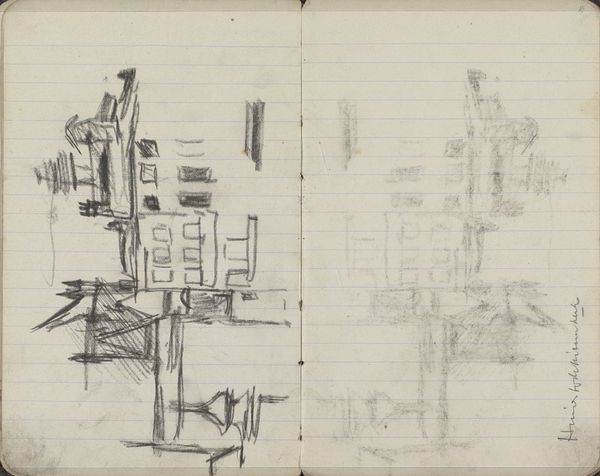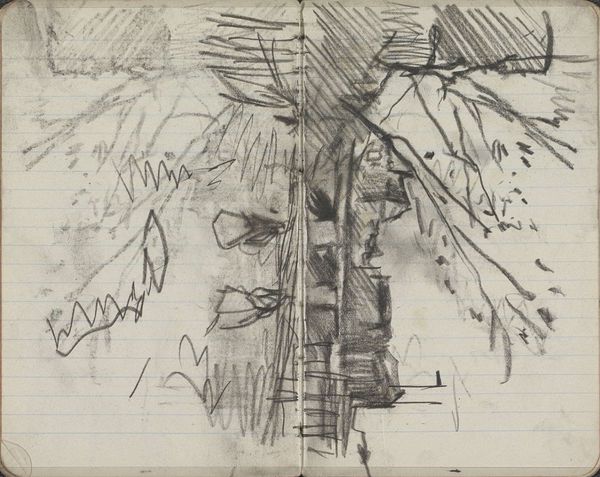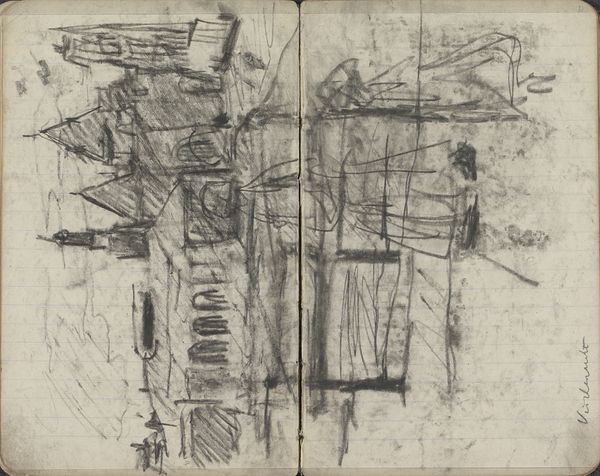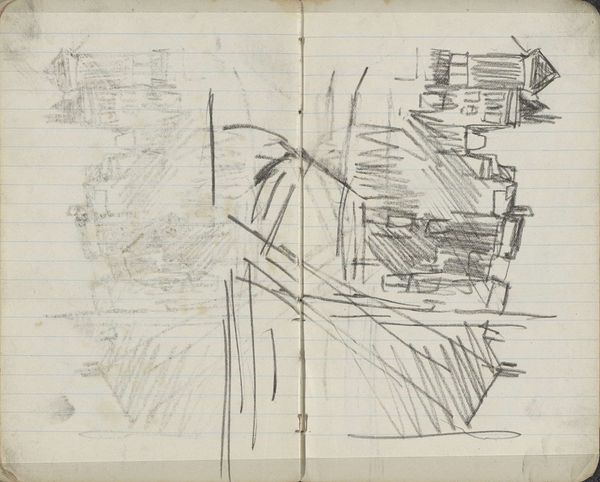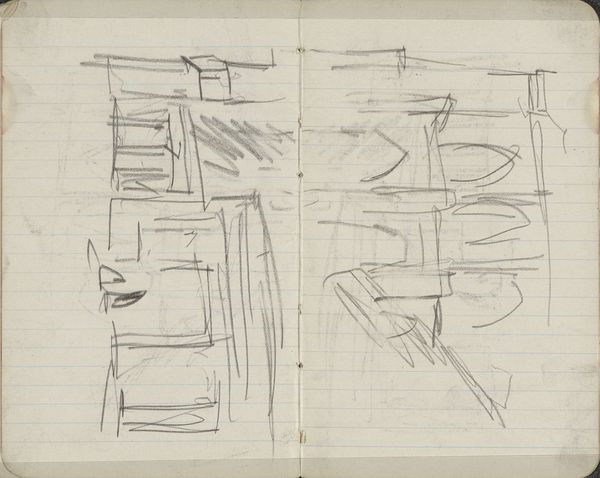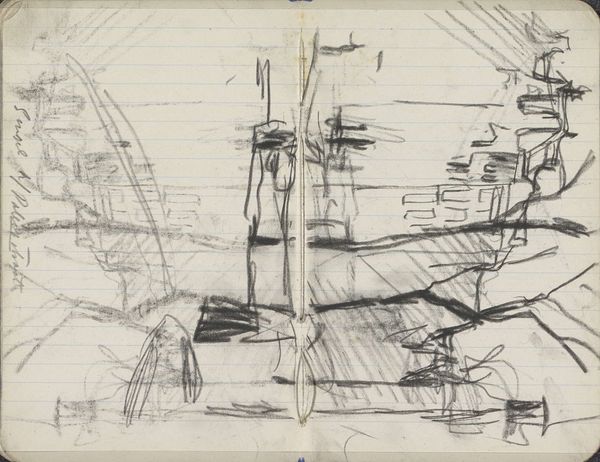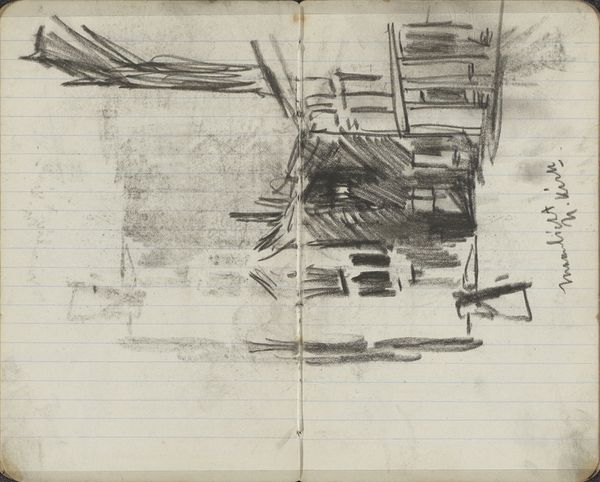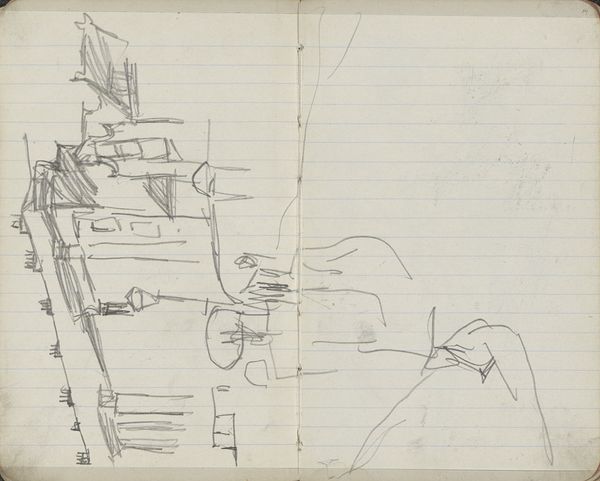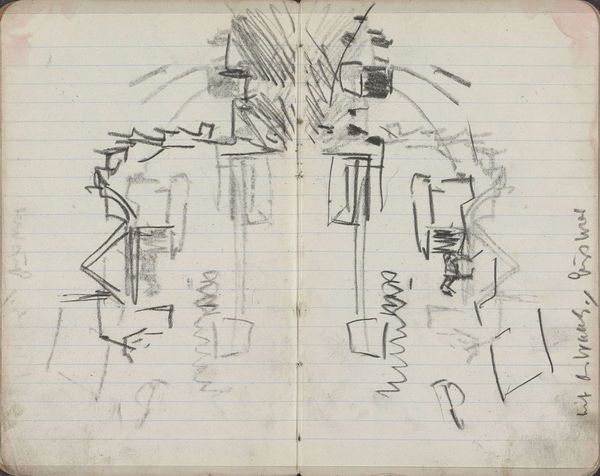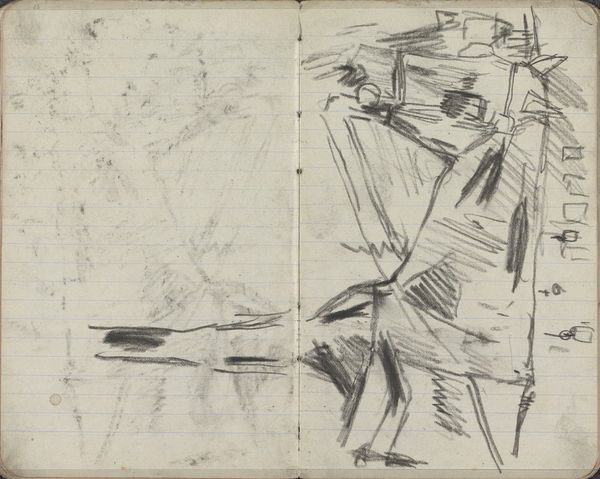
Aapjes en paardentrams op het Rokin te Amsterdam 1893 - 1894
0:00
0:00
Copyright: Rijks Museum: Open Domain
Curator: Before us is George Hendrik Breitner's work, likely dating from 1893 to 1894. It is titled, "Aapjes en paardentrams op het Rokin te Amsterdam" created using pencil and graphite on paper. Editor: It looks like raw energy unleashed on lined paper. I'm struck by the immediate impression of chaos and movement. A vibrant sort of urban blur, all captured in graphite. What do you make of it? Curator: The use of line is compelling. Breitner utilizes quick, short strokes alongside longer, more deliberate marks, creating a tension. The varying tonal values achieved with the graphite give depth and form, emphasizing the structural elements of the tram. Editor: There’s almost a dance happening, wouldn't you agree? The trams leaning in, the chaotic lines trying to escape the page. And, is it just me, or do the hurried strokes carry the rumble of the city itself? The feeling is of capturing something before it vanishes, which speaks volumes to our own fleeting moments of existence. Curator: Interesting take! What stands out is the composition; it appears almost split. A denser concentration of lines occupies the left side, opposed to the lighter, more sketched rendering on the right. This division prompts an intriguing visual comparison—a dual perspective of the subject perhaps. Editor: Exactly. Perhaps on the left he dove straight in, eager to grapple the essence, only to loosen on the right and step back. He left us to observe how our initial impulse, however vibrant and chaotic, gets refined upon reflection, but without fully defining all forms? What might the semioticians tell us? Curator: I suppose a semiotic analysis might discuss the street's architectural semiotics and class divides of that epoch. Yet, by looking at the stylistic elements such as line quality and spatial arrangements, we witness not a faithful reproduction but an abstracted emotional encounter of form, space, and subject—rendering interpretation open-ended. Editor: Yes, there’s the pulse of the city breathing through this sketchbook page, wouldn't you say? Curator: Yes. This sketch, regardless of its seemingly informal presentation, presents itself as a meticulously constructed analysis, revealing how chaos and balance function on parallel registers. Editor: Well said. For me, the sketch, in its unfinished state, reminds me that even fleeting observations carry an essence and profound meaning, especially when viewed from the heart.
Comments
No comments
Be the first to comment and join the conversation on the ultimate creative platform.
